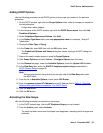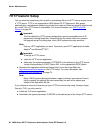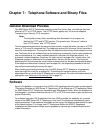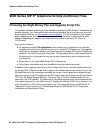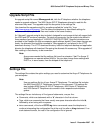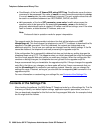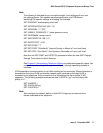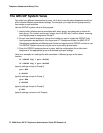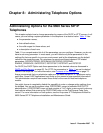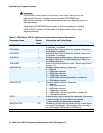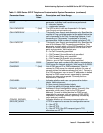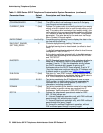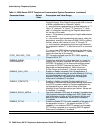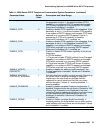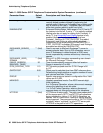
Issue 2 December 2007 73
Chapter 8: Administering Telephone Options
Administering Options for the 9600 Series SIP IP
Telephones
This chapter explains how to change parameters by means of the DHCP or HTTP servers. In all
cases, you are setting a system parameter in the telephone to a desired value. Table 11
lists:
● the parameter names,
● their default values,
● the valid ranges for those values, and
● a description of each one.
Table 11 is a comprehensive list of all the parameters you can configure. However, you do not
have to set every parameter. In most cases, you will include only those parameters in the
settings file that are specific to your own environment and let the telephones use the default
values for the remaining ones. At a minimum, be sure to set these important SIP-related
parameters: SIPPROXYSRVR, SIPDOMAIN, SNTPSRVR, SIPSIGNAL,
ENABLE_PRESENCE, GMTOFFSET, DSTOFFSET, DSTSTART, and DSTSTOP.
For DHCP, the DHCP Option sets these parameters to the desired values as discussed in
DHCP and File Servers
on page 53. For HTTP, the parameters in Table 11 are set to desired
values in the script file. For more information, see Contents of the Settings File
on page 70.
Avaya recommends that you administer options on the 9600 Series SIP IP Telephones using
script files. Some DHCP applications have limits on the amount of user-specified information.
The administration required can exceed those limits for the more full-featured telephone
models.
You might choose to completely disable the capability to enter or change option settings from
the dialpad. You can set the system value, PROCPSWD, as part of standard DHCP/HTTP
administration. If PROCPSWD is non-null and consists of 1 to 7 digits, a user cannot invoke any
local options without first entering the PROCPSWD value on the Craft Access Code Entry
screen. For more information on craft options, see the Avaya one-X™ Deskphone Edition for
9600 Series SIP IP Telephones Installation and Maintenance Guide.



